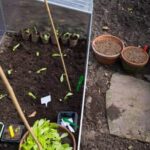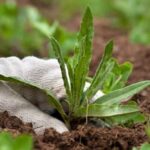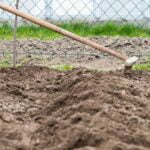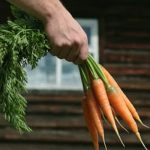Are you interested in growing your own vegetables but don’t have the space for a traditional garden? Look no further. This article will guide you through the basics of container gardening vegetables for dummies. Whether you’re a beginner or just looking to expand your gardening skills, we’ve got you covered.
In this section, we’ll start by providing an overview of container gardening for beginners. We’ll explore the benefits of this approach, such as the ability to grow fresh produce in small spaces and the convenience of being able to move your garden around. With our step-by-step guide, even those with limited gardening experience can learn how to create a successful vegetable garden in containers.
You’ll also discover tips on choosing the right containers for your vegetable garden, essential tools and supplies for successful container gardening, selecting the best vegetables for this method, and valuable planting and care tips. By the end of this article, you’ll be equipped with all the knowledge needed to start your own thriving container garden full of delicious and nutritious vegetables.
Choosing the Right Containers for Your Vegetable Garden
When it comes to container gardening vegetables for dummies, choosing the right containers is crucial for the success of your garden. The first thing to consider is the size of the container. Larger vegetables like tomatoes and peppers will require bigger pots, while smaller plants like lettuce and herbs can thrive in smaller containers. It’s important to choose containers that are deep enough for the roots of your chosen vegetables to grow properly.
Another factor to take into account is the material of the container. Plastic, terra cotta, and wooden containers are all popular choices for vegetable gardening. Each material has its own benefits and drawbacks, so it’s important to do some research on which will work best for the specific vegetables you want to grow.
Drainage is also a key consideration when choosing containers for your vegetable garden. Proper drainage is essential to prevent waterlogging and root rot. Ensure that your containers have sufficient drainage holes at the bottom, or you can create drainage by adding pebbles or broken pottery pieces before adding soil.
Lastly, consider the weight and mobility of your containers. If you plan on moving your vegetable garden around to optimize sunlight exposure or if you have limited space, lighter-weight options like plastic or fiberglass may be more suitable than heavier materials like ceramic or stone. By carefully selecting the right containers for your vegetable garden, you’ll set yourself up for a successful and fruitful harvest in your container gardening adventure as a beginner.
Essential Tools and Supplies for Successful Container Gardening
When it comes to successful container gardening, having the right tools and supplies is essential. For beginners and seasoned gardeners alike, these items can make the difference between a thriving vegetable garden and a disappointing one.
First and foremost, you’ll need the proper containers for your vegetables. Look for containers that are at least 12 inches in diameter and have good drainage. This will ensure that your plants have enough space to grow and that excess water can easily escape, preventing root rot.
In addition to containers, you’ll also need quality potting soil that is specifically formulated for vegetables. This type of soil will provide the necessary nutrients for your plants to thrive in a confined space. A trowel or hand shovel will come in handy for planting and maintaining your vegetable garden, while a watering can or hose attachment with adjustable pressure will help you water your plants effectively.
Another important tool to have on hand is a pair of gardening gloves. Not only will they protect your hands from dirt and potential thorns, but they’ll also provide some defense against common pests like slugs and snails. And don’t forget about fertilizer. While potting soil provides some nutrients, you may need to supplement with a balanced fertilizer as your vegetables grow.
Finally, consider investing in some plant supports or trellises if you plan on growing vining vegetables like tomatoes or cucumbers. These will help keep your plants upright and prevent them from sprawling out too much in their confined spaces.
| Tools and Supplies | Importance |
|---|---|
| Containers with good drainage | Provide space for growth and prevent root rot |
| Potting soil formulated for vegetables | Provides necessary nutrients for plant growth in confined spaces |
| Trowel or hand shovel |
Selecting the Best Vegetables for Container Gardening
When it comes to container gardening vegetables for dummies, choosing the right vegetables to grow in your containers is crucial for successful and bountiful harvests. Not all vegetables are suited for container gardening, so it’s important to select varieties that thrive in small spaces and don’t require a lot of room to spread out. Here are some vegetables that are perfect for growing in containers:
Tomatoes
Tomatoes are one of the most popular vegetables for container gardening. They come in a variety of sizes, from cherry tomatoes to beefsteak tomatoes, making them versatile for different container sizes. Just be sure to provide support, such as a cage or trellis, as tomatoes can get quite heavy when laden with fruit.
Peppers
Peppers, both bell and hot varieties, also do well in containers. They don’t require a lot of space and can produce a high yield of fruits throughout the growing season. Make sure your containers receive plenty of sunlight for optimum growth and fruit production.
Salad Greens
Lettuce, spinach, arugula, and other salad greens are excellent choices for container gardening. They have shallow root systems and can be grown close together, making them ideal for small spaces. Plus, you can continuously harvest leaves for fresh salads throughout the season.
These are just a few examples of vegetables that are well-suited for container gardening. When selecting which vegetables to grow in your containers, consider factors such as the size of the plants at maturity, their water and sunlight needs, and whether they will thrive in confined spaces. With the right selection, even beginners can enjoy a successful harvest from their container gardens.
Planting and Care Tips for Container Gardening Vegetables
When it comes to planting and caring for vegetables in container gardens, there are a few important tips to keep in mind. First, it’s crucial to ensure that your containers have proper drainage to prevent waterlogged roots, which can lead to root rot. You can achieve this by drilling holes in the bottom of your containers or placing a layer of gravel or small rocks before adding soil.
Another key factor in successful container gardening is choosing the right soil. Look for a high-quality potting mix that is specifically formulated for container gardening. These mixes are lightweight, well-draining, and usually contain added nutrients to support plant growth. Avoid using regular garden soil, as it tends to compact in containers and may not provide adequate aeration for the roots.
Proper watering is also essential for the health of your container garden vegetables. Since containers can dry out quickly, especially during hot weather, it’s important to check the moisture level regularly and water as needed. A good rule of thumb is to water when the top inch of soil feels dry to the touch. Additionally, be mindful of overwatering, which can be just as detrimental as underwatering.
| Container Gardening Tip | Details |
|---|---|
| Drainage | Ensure proper drainage in containers to prevent root rot. |
| Potting Mix | Use a high-quality potting mix formulated for container gardening. |
| Watering | Check soil moisture regularly and water when the top inch feels dry. |
Dealing With Common Pests and Diseases in Container Gardens
Container gardening vegetables for dummies can be a rewarding experience, but it’s important to be aware of the potential pests and diseases that can affect your plants. Here are some common issues to watch out for and how to deal with them:
1. Aphids: These tiny insects can wreak havoc on your vegetable plants by sucking sap from the leaves and stems. To get rid of aphids, try spraying the affected plants with a mixture of water, dish soap, and neem oil. You can also introduce natural predators like ladybugs to help control the aphid population.
2. Powdery mildew: This fungal disease appears as a white powdery coating on the leaves of your plants. To prevent powdery mildew, make sure your plants have good air circulation and aren’t overcrowded in their containers. If you do notice powdery mildew, remove and dispose of the affected leaves and treat the remaining foliage with a fungicidal spray.
3. Tomato hornworms: If you’re growing tomatoes in your container garden, keep an eye out for these large caterpillars that feed on tomato plant leaves. Handpicking the hornworms off your plants is an effective way to control their population. You can also introduce beneficial insects like parasitic wasps that prey on hornworms.
By being vigilant about pest and disease management in your container garden, you can ensure that your vegetables thrive and produce a bountiful harvest for you to enjoy.
Harvesting and Enjoying the Fruits of Your Labor
After all the hard work of planting and caring for your container garden vegetables, it’s finally time to enjoy the fruits of your labor. Harvesting your homegrown produce can be incredibly rewarding, and there’s nothing quite like the taste of freshly picked vegetables straight from your own garden.
If you’re new to container gardening vegetables for dummies, here are some tips for successful harvesting:
1. Timing is key: It’s important to harvest your vegetables at the right time to ensure optimal flavor and texture. Keep an eye on the maturity dates for each vegetable variety, and look for visual cues such as color and size to determine when they are ready to be harvested.
2. Use the right tools: Depending on the type of vegetables you’re growing, you may need specific tools for harvesting. For example, a sharp pair of scissors or pruning shears can be handy for cutting leafy greens or herbs, while a small garden spade or trowel may be needed for root vegetables like carrots or radishes.
3. Handle with care: When harvesting your container garden vegetables, it’s important to handle them gently to avoid damaging the plants. Use a gentle twisting motion when picking fruits like tomatoes or peppers, and carefully cut stems or vines with a clean knife or scissors to prevent unnecessary stress on the plant.
Once you’ve harvested your delicious homegrown veggies, it’s time to enjoy them. Whether you’re cooking up a fresh salad, grilling some flavorful kebabs, or simply snacking on raw veggies with dip, there’s no shortage of ways to savor the delicious flavors of your container garden harvest.
Get creative in the kitchen and experiment with different recipes to make the most of your bountiful vegetable harvests. With container gardening vegetables for dummies being so simple yet fruitful is an amazing experience not only rewarding but also healthy.
Troubleshooting Common Problems in Container Gardening
Improper Drainage
One common problem that many beginners face when it comes to container gardening is improper drainage. Without proper drainage, plants can suffer from root rot and other water-related issues. To avoid this problem, make sure that your containers have sufficient drainage holes at the bottom. You can also add a layer of gravel or small rocks at the bottom of the container to improve drainage.
Overwatering or Underwatering
Another issue that can arise in container gardening is overwatering or underwatering your vegetables. It’s important to find the right balance when it comes to watering your plants. Overwatering can lead to root rot, while underwatering can cause wilting and stunted growth. Be sure to check the moisture level of the soil regularly and adjust your watering schedule accordingly.
Soil Quality
The quality of the soil used in your containers can also affect the health of your vegetable plants. Poor-quality soil can lead to nutrient deficiencies and hinder plant growth. Make sure to use a high-quality potting mix specifically designed for container gardening vegetables. You can also consider adding organic matter or compost to improve the soil structure and fertility.
By addressing these common problems in container gardening, you can ensure that your vegetable plants thrive and produce a bountiful harvest. Taking proactive measures such as ensuring proper drainage, optimizing watering practices, and using high-quality soil will set you up for success in container gardening vegetables for dummies.
Conclusion
In conclusion, container gardening can be a simple and rewarding experience for beginners. With the right containers, tools, and vegetable selections, even those new to gardening can enjoy the benefits of growing their own produce. By following planting and care tips, as well as learning how to deal with common pests and diseases, anyone can find success in their container garden.
For those intimidated by traditional garden setups or lacking outdoor space, container gardening offers an accessible alternative. Whether on a small balcony or patio, individuals can create flourishing vegetable gardens in just a few pots. Additionally, troubleshooting common problems becomes easier with guidance and the right resources.
So don’t be discouraged if you’re new to gardening-container gardening vegetables for dummies is a great way to dip your toes into this hobby. With the right information and a bit of patience, anyone can harvest and enjoy the fruits of their labor from their very own container garden. Happy gardening.
Frequently Asked Questions
What Is the Easiest Vegetable to Grow in a Container?
The easiest vegetable to grow in a container is probably lettuce. It doesn’t need a lot of space, grows relatively quickly, and thrives in cooler temperatures. Plus, it’s versatile and can be used in various dishes.
What Vegetables Work Well in Container Gardens?
Many vegetables work well in container gardens, including tomatoes, peppers, radishes, carrots, spinach, kale, and beans. It’s essential to consider the size of the container and the plant’s specific needs when choosing what to grow.
How Do You Start a Container Garden for Beginners?
To start a container garden for beginners, first, choose a suitable location with plenty of sunlight. Then select the right containers and soil for the chosen vegetables. Next, plant the seeds or seedlings according to their specific requirements and water them regularly while monitoring their growth. It’s also helpful to learn about fertilizing and pest control methods.

If you’re looking to get into vegetable gardening, or are just looking for some tips on how to make your current garden better, then you’ve come to the right place! My name is Ethel and I have been gardening for years. In this blog, I’m going to share with you some of my best tips on how to create a successful vegetable garden.





